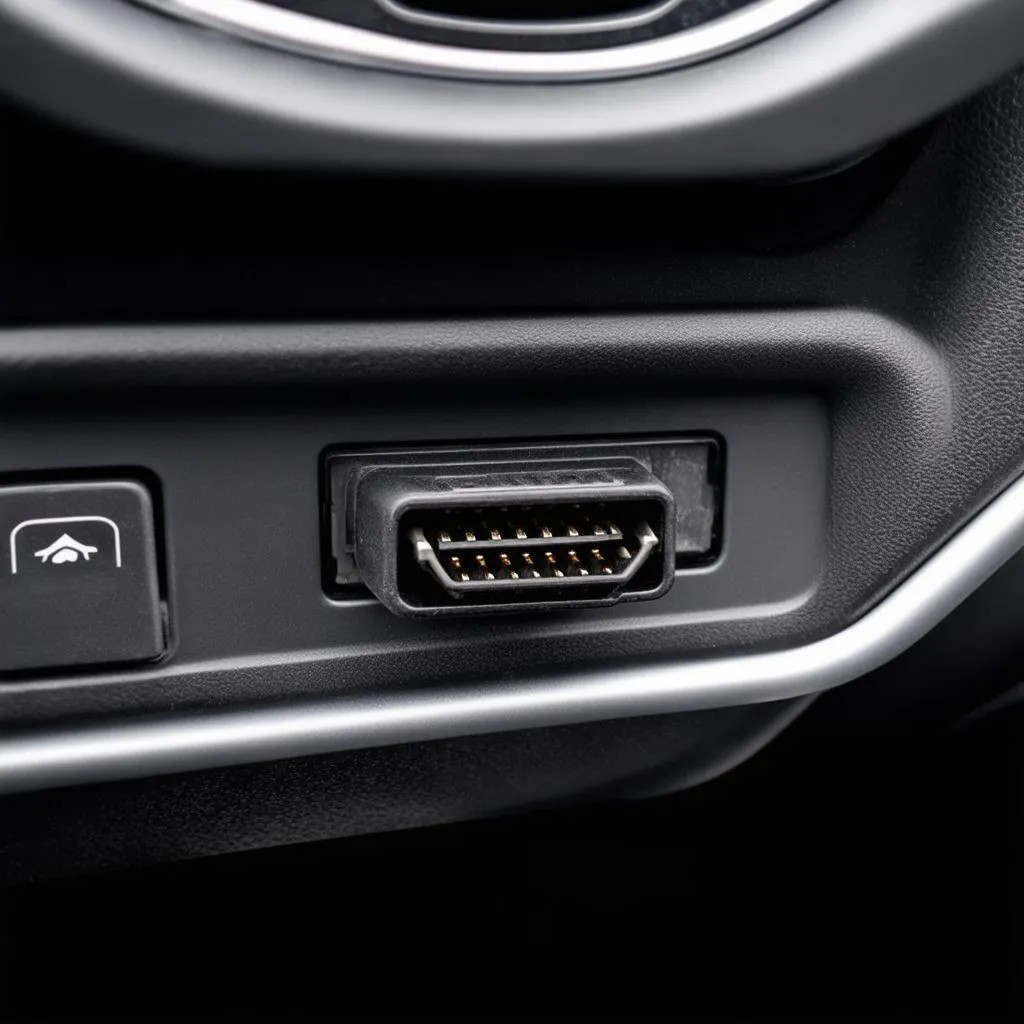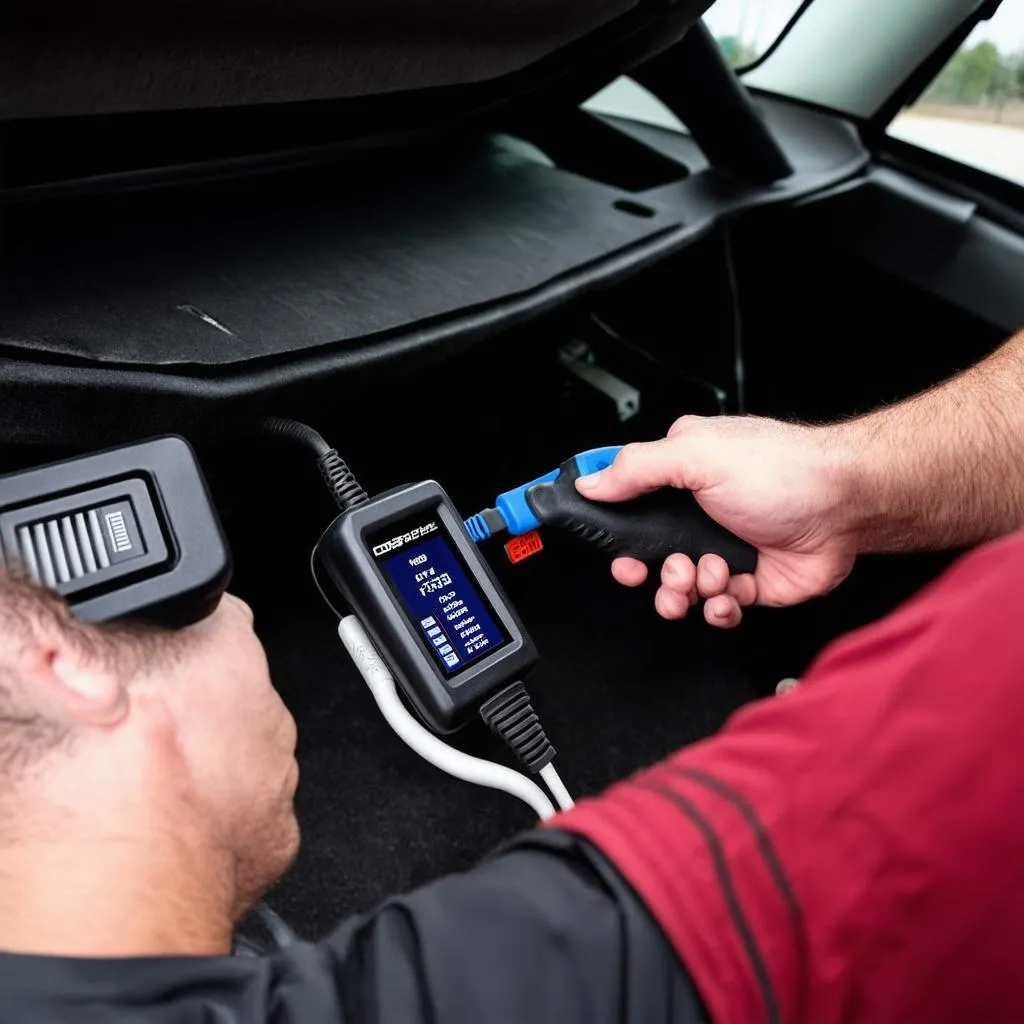Have you ever wondered why your 2010 Camaro’s check engine light keeps coming on? Maybe you’re trying to diagnose a problem yourself or just curious about how the car’s diagnostics system works. Well, the OBD II port is your key to unlocking that information!
What is the OBD II Port?
The OBD II port, or On-Board Diagnostics II port, is a standardized connector found on all vehicles manufactured since 1996. It acts as a gateway to your car’s computer, allowing you to retrieve diagnostic trouble codes (DTCs) and other valuable information. These codes can tell you what problems are occurring with your engine, transmission, and other systems, helping you diagnose and potentially fix issues before they become major problems.
Why is the OBD II Port Important?
Think of the OBD II port as the bridge between your car’s brain and your tools. It lets you see what’s happening under the hood, giving you a more in-depth understanding of your vehicle’s health. This can help you:
- Identify and diagnose problems: The OBD II port can tell you why your check engine light is on, allowing you to address specific issues.
- Track your car’s performance: You can monitor fuel efficiency, engine temperature, and other vital parameters.
- Save money on repairs: Early detection of problems can help prevent expensive breakdowns, allowing you to address issues before they escalate.
- Increase your car’s lifespan: By addressing potential issues promptly, you can extend the life of your 2010 Camaro.
Where is the OBD II Port Located in a 2010 Camaro?
The OBD II port is typically located under the dashboard, near the steering column. It’s usually a 16-pin connector with a distinct shape. Here’s how you can find it:
- Locate the dashboard: Look beneath the steering wheel and towards the center of the dashboard.
- Look for a rectangular connector: You’ll usually find the port in a small recess or tucked behind a panel.
- Check your car’s manual: If you can’t find the OBD II port, consult your car’s owner’s manual for precise instructions.
How to Use the OBD II Port
Using the OBD II port can be as simple as plugging in a diagnostic tool. These tools are available in various forms:
- OBD II Scanners: These handheld devices can read and clear DTCs, providing a basic level of diagnostic information.
- OBD II Adapters: These adapters connect to your smartphone or computer, enabling you to use apps or software for a more comprehensive analysis.
Common OBD II Port Issues and Solutions
While the OBD II port is generally reliable, you might encounter a few issues:
- Corrosion: The OBD II port can become corroded due to moisture or exposure to the elements. Clean the connector with a contact cleaner and a toothbrush to address this.
- Loose or damaged connections: Inspect the connector for any loose wires or broken pins. These might need to be repaired or replaced.
- Faulty OBD II port: In rare cases, the port itself might be defective. You’ll likely need a replacement in this situation.
Common Questions About the 2010 Camaro Obd Ii Port
“What kinds of codes can I get from the OBD II port?”
The OBD II port can provide a wide range of codes that indicate potential issues with your car. These codes are standardized and can be found in detailed reference guides. Common code categories include:
- Engine codes (P codes): These relate to engine operation, including misfires, fuel system problems, and emissions issues.
- Transmission codes (P codes): These cover issues with the transmission, like shifting problems or malfunctioning sensors.
- Body codes (B codes): These indicate issues with various body components, such as lights, windows, or climate control.
- Chassis codes (C codes): These deal with the chassis, including braking systems, airbags, and stability control.
“Can I use an OBD II scanner from another car on my 2010 Camaro?”
While OBD II ports are standardized, some car manufacturers use proprietary protocols for specific functionalities. It’s best to use a scanner specifically designed for your 2010 Camaro or compatible with its year and model.
“What if I don’t know how to interpret the codes?”
Don’t worry! You can consult online resources, repair manuals, or contact a qualified mechanic for help deciphering the codes.
“Can I reset the check engine light myself?”
You can usually clear DTCs using an OBD II scanner or adapter. However, this only resets the light, not fixes the underlying problem. It’s essential to address the issue causing the code to prevent future issues.
Tips for Using the OBD II Port
Here are some tips for getting the most out of your 2010 Camaro’s OBD II port:
- Keep the port clean: Regularly clean the port with a contact cleaner to prevent corrosion.
- Use a quality scanner: Invest in a reliable scanner that’s compatible with your car’s model.
- Don’t ignore codes: Address any codes you find to prevent potential problems.
- Consult a mechanic: If you’re unsure about interpreting codes or fixing issues, seek professional help.
The Future of OBD II
The OBD II system is constantly evolving. New features and capabilities are being added, expanding its diagnostic abilities. You can look forward to even more information and control over your 2010 Camaro in the future!
 obd-ii-port-location
obd-ii-port-location
Conclusion
The OBD II port is an invaluable tool for understanding your 2010 Camaro’s health. By utilizing it, you can stay on top of potential problems, save money on repairs, and extend the life of your vehicle. Don’t hesitate to explore this powerful diagnostic tool and empower yourself to make informed decisions about your car’s maintenance!
We hope this guide has been helpful. For any further questions or assistance with your 2010 Camaro, feel free to reach out to our team at techcarusa.com.
Need help with diagnosing your car?
 obd-ii-scanner-tool
obd-ii-scanner-tool
[We can help you find the right diagnostics tools and get you back on the road. Contact us at +84767531508 on Whatsapp.]